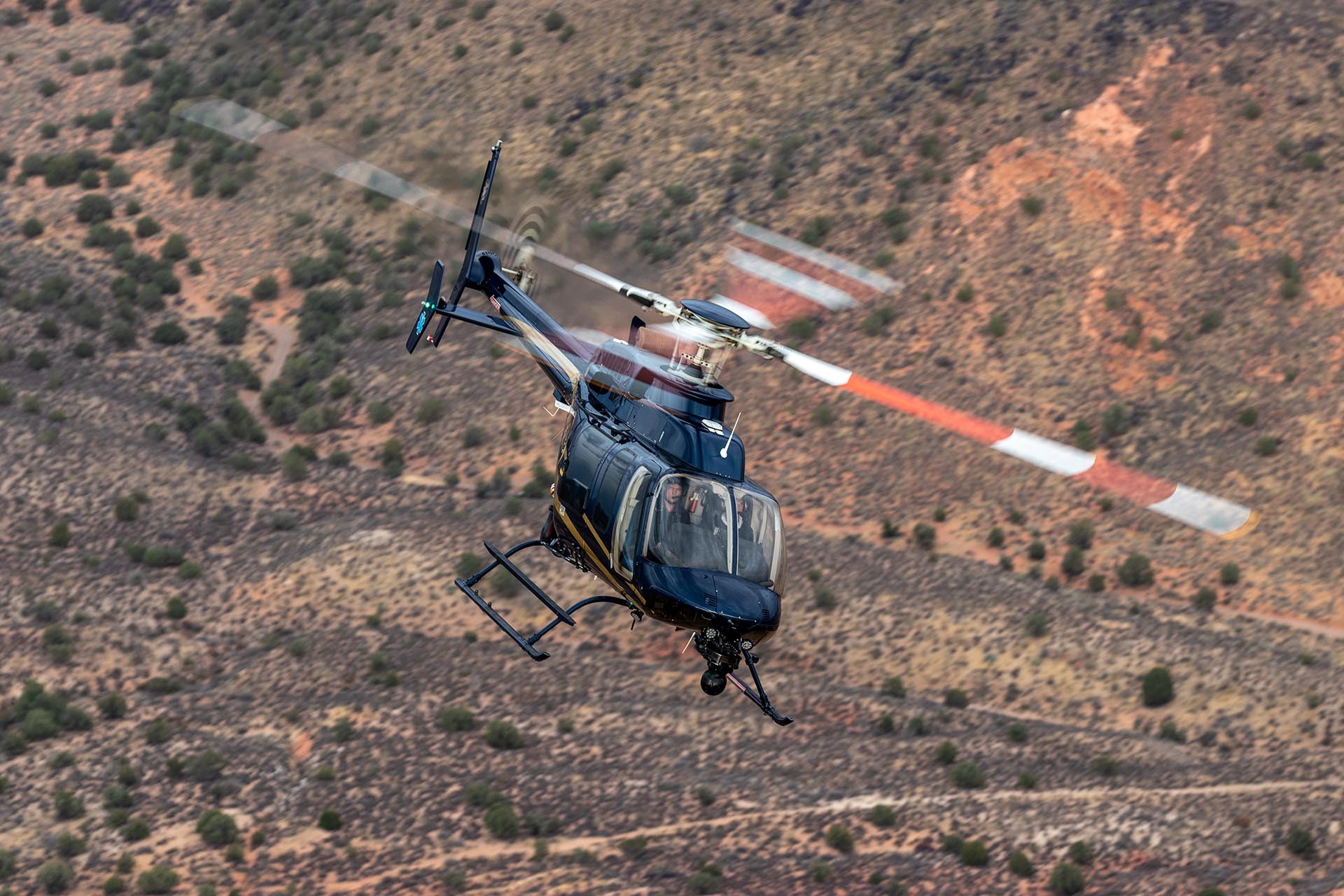The Air Operations Unit of the Iron County Sheriff's Office located in Cedar City, Utah, is unique not only for operating in a beautiful yet unforgiving mountainous environment but also its partnership with an institution of higher learning, Southern Utah University. HeliOps met with the pilots and deputies of Iron County to learn more about their missions, their aircraft, and the agency’s unique partnership with the university. We also had the opportunity to learn more about the program’s plans for the future and observe the most recent graduates from the local law enforcement K9 academy as they received their first helicopter familiarization training flights.
Air Support for Southern Utah
Iron County is home to some truly gorgeous scenery, from the fertile valleys near Cedar City, up to the rugged peaks of the Parowan (Brian Head) Mountain Range. The landscape of the county also includes areas of open desert and breathtaking canyonlands that extend into renowned National Parks like Bryce Canyon and Zion. Much of the county’s terrain is unpopulated which further helps to make it a year-round paradise for lovers of outdoor activities. But, the high volume of outdoor enthusiasts, especially during the warmer months of the year, also means that the Iron County Sheriff’s Office (ICSO) and other area law enforcement agencies are regularly conducting Search and Rescue (SAR) missions, in addition to carrying out their other law enforcement duties.
As more people venture outdoors during the warmer months of spring, summer, and fall, it is very easy for them to become lost or get injured, especially in those areas of vast desert or mountainous terrain. When only one or two small dirt roads service an area, locating someone by ground can take a long time, and that’s time those victims may not have to spare. Thus, having air assets and highly trained aircrews readily available to respond to these types of missions is essential. The helicopters of the Utah Department of Public Safety’s (DPS) Aero Bureau are available to assist in law enforcement and public safety missions across all of Utah, and even into areas of neighboring states. However, the Aero Bureau’s helicopters are based in the more highly populated northern part of the state which left the entirety of Southern Utah without any dedicated public safety aviation assets. That is; until SUU Aviation partnered with the Iron County Sheriff’s Office, in 2015.
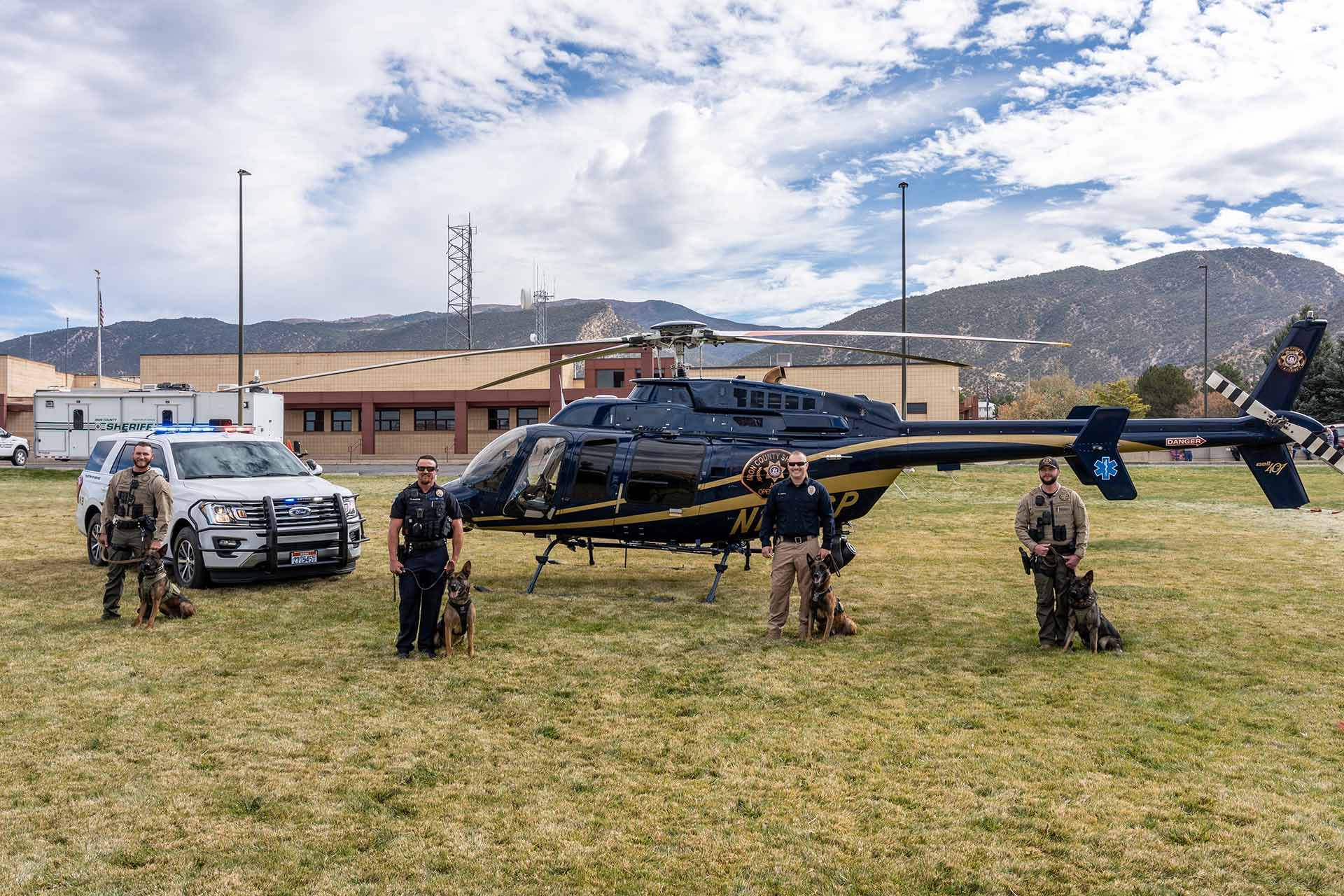
Forging a Unique Partnership
On March 23, 2015, 13 senior instructor pilots at SUU Aviation were deputized by the ICSO to assist with aerial support of law enforcement activities within Iron County. These pilots had all previously been volunteer pilots for the Sheriff’s Office, but their deputization now allowed these senior instructors at the university to officially work as deputy sheriffs during air missions whilst keeping within FAA guidelines. This seamless partnership has since been a game-changer for public safety air support in the region by allowing air assets to arrive on a scene within minutes, instead of waiting hours for another available aircraft to fly down from a different part of the state.
Averaging between five and ten flights per month, the ICSO Air Operations Unit supports the entire gamut of law enforcement and public safety aviation missions including pursuits (vehicle and foot), missing persons, search and rescue, missing aircraft searches, training, and evidence location missions for the Iron County Sheriff’s Office. Roughly half of the missions flown are of the search and locate or search and rescue types, with pursuits, patrol, and surveillance accounting for about 30% of the total missions. The remaining 20% of flights for the Sheriff’s Office are typically training missions or other assorted missions as the need arises. Because this air support program is the only one of its kind in southern Utah, it is truly a regional asset. As such, this program also supports all law enforcement agencies within Iron County, such as the Cedar City Police, Enoch Police, Parowan Police, Division of Wildlife Services, Adult Probation and Parole, and SUU Police; as well as other law enforcement agencies in surrounding counties when air support is requested.
The program’s location is not the only aspect that makes it unique. To the best of the program managers’ knowledge, the partnership between SUU Aviation and the ICSO is a type of arrangement that is not replicated elsewhere in the United States. Under the agreement of the partnership, the flights are donated by Southern Utah University to the ICSO and the citizens of Southern Utah. Additionally, all aircraft maintenance is also provided by the University and performed by SUU Aviation and its dedicated group of mechanics. Because the aircraft and its use are donated by the University, when it is not being flown for missions with the ICSO, it is utilized by SUU Aviation for several of its advanced flight training programs, such as advanced mountain training and Night Vision Goggle (NVG) training. The bottom line of this innovative partnership means that aviation assets for public safety are available to the communities and visitors of Southern Utah whenever they are needed, and without having to be funded by the tax dollars from any of the area’s residents.
Beyond the ICSO’s Bell 407, this partnership also gives the Iron County Sheriff’s Office an abundance of additional available air resources because SUU Aviation’s entire fleet is available for use by the Sheriff’s Office. Depending on mission type, all types of SUU’s 36 aircraft have been used at one time or another to assist the Sheriff’s Office, including the university’s R44 Cadets and Ravens on up to the MBB BO 105, as well as their fixed-wing Cirrus SR20s, Beechcraft Barron, Bonanza, and American Champion Citabria.
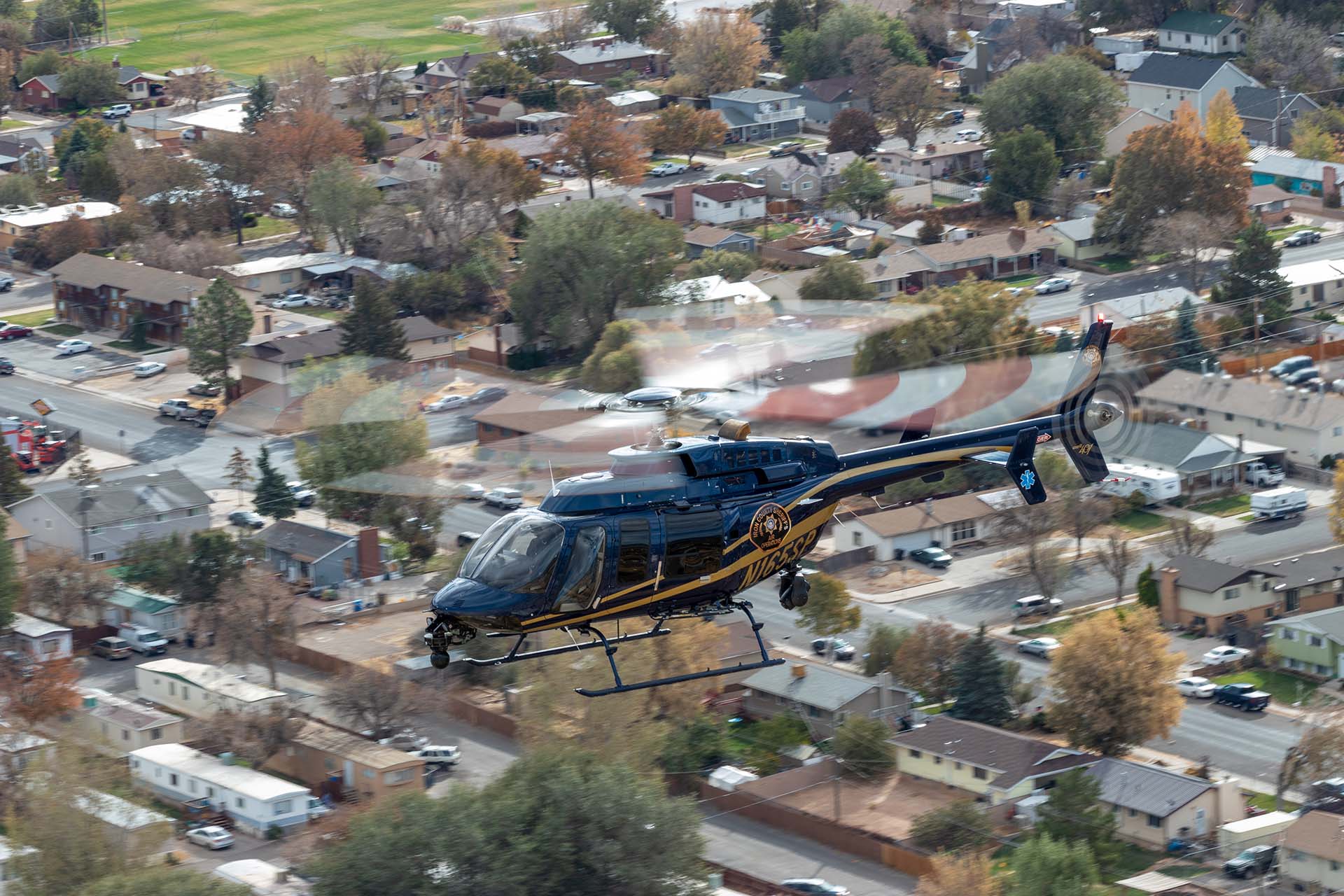
ICSO’s Bell 407
Despite the wide range of available airframes, the primary helicopter used for the ICSO’s Air Operations program is their mission-equipped Bell 407. According to the pilots, they transitioned from their Bell 206s to the Bell 407 because of its high altitude performance, speed, and smooth handling characteristics. The 407 also has an excellent safety record and outperforms the Bell 206s which used to be the primary ICSO air support aircraft. Plus, with its FADEC, the 407 can be started and launched quickly, further decreasing the amount of time between a dispatch call coming in and having an aircraft on the scene.
The air support unit’s 407 was acquired through a partnership with a friend and donor to SUU Aviation, Dane Armstrong, and his company San Juan Aviation. Formerly in service with the Delaware State Police, the helicopter is equipped with a FLIR and Trakkabeam searchlight, and it also has a microwave downlink antenna to broadcast information to ground units. The aircraft is also equipped with seven radios, three GPS units, a loudspeaker/siren, rear sliding doors, rappel mounts, EMS kit and litter, six underbelly-mounted scene lights, and a radio in the passenger cabin that is capable of being operated independently of the pilot /co-pilot / TFO radio stacks.
Despite being such a well-equipped and high-performance aircraft, the environment itself can make operations tricky for the ICSO Pilot Deputies. During the warmer months, performance planning is critical, on the hottest days of the year, the density altitude can approach 10,000ft at Cedar City’s Airport which is situated at an elevation of 5,622 ft. Unfortunately, the rapid response time needed for public safety flights means that mission planning is done in a compressed timeframe and there simply isn’t time to conduct the longer, in-depth planning generally associated with flying in these conditions. Getting a call from dispatch, leaving the airport, and then, within minutes, attempting a landing at over 10,000ft ASL can pose a real challenge even for the most experienced pilots. As if the weather conditions were not complicated enough, there is also the task of managing all of the law enforcement radios and GPS units which provide additional challenges that the aircrew must overcome in the performance of their duties. Yet, in spite of these extra hurdles, ICSO’s dedicated aircrews continue to achieve success after success in their missions.
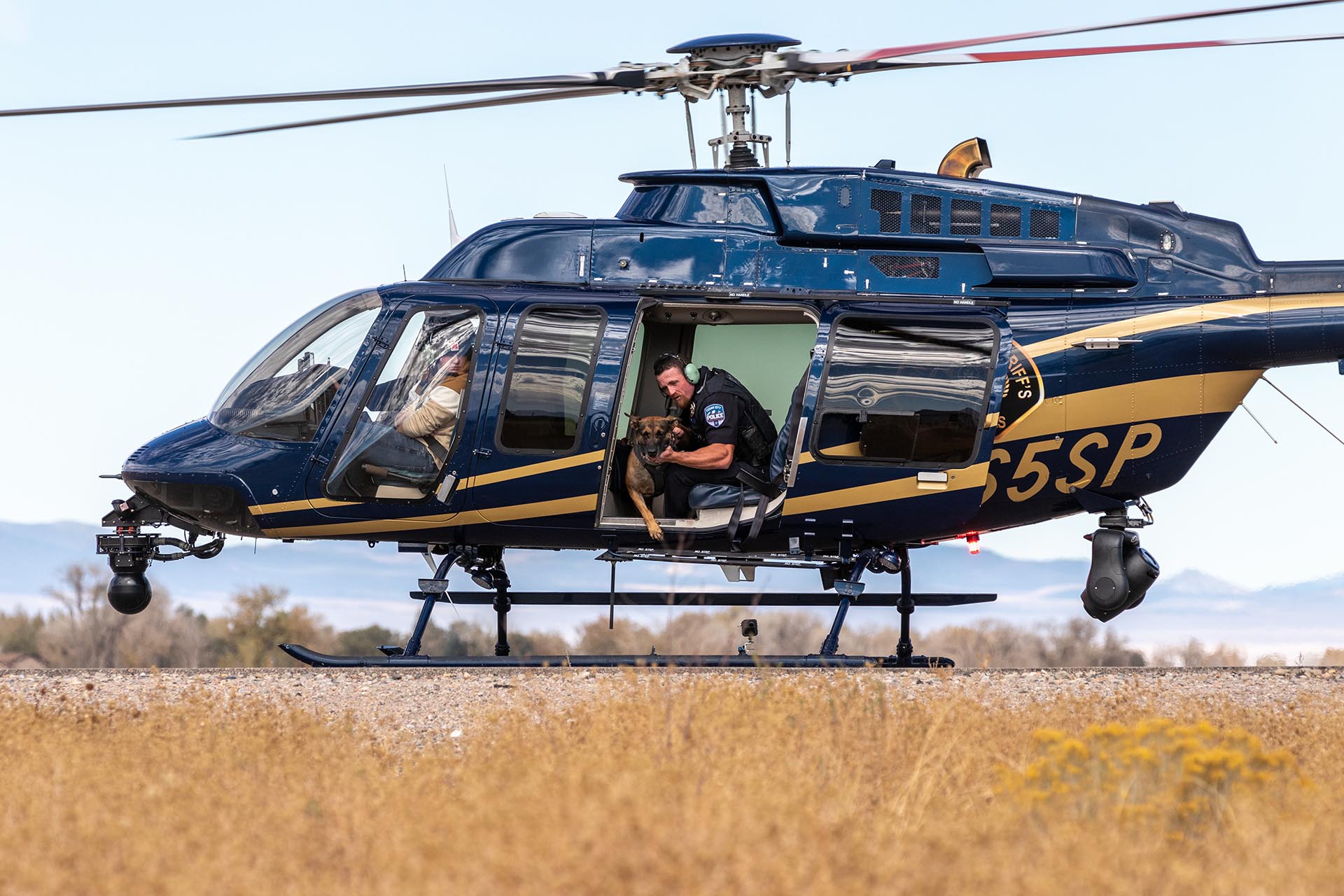
Giving back to the community
Being a primarily “on-call” public safety aviation asset means that in many cases, successful missions result in lives saved or people protected. In fact, every ICSO flight is for the benefit of someone else. Utilizing the university’s air assets to get help to people that may otherwise be out of reach is a rewarding endeavor for all involved. The pilots and Tactical Flight Officers (TFOs) for the ISCO Air Operations program share a deep understanding of the importance of their missions along with a great deal of pride in being able to help and giving back to their community. “Whether it’s to protect somebody or to assist someone in need, being part of this program just makes you feel good!” exclaims Richard Cannon, Director of Safety and Flight Operations, SUU Aviation.
Mountainous areas are the most common for calls to help locate missing persons due to hiking, hunting, and other outdoor-related activities. According to the pilots, the area around Kannaraville Falls is quite popular with hikers due to its remoteness and difficult terrain, but those same factors can easily result in injury and the need for emergency medical assistance. Weather in the mountains can rapidly change and the Cedar Breaks National Monument is another one of those areas where lost hikers can easily find themselves in conditions that they are not prepared for. As was the case of one call when a vacationing schoolteacher from Canada was hiking in ‘the Breaks’ and got lost. The situation then became critical when the temperature at her 10,000ft elevation dropped below freezing. Fortunately, ICSO’s air support unit was able to locate her within about 20 minutes of being dispatched.
Pilot Cannon recalls another one of the many missions where having a dedicated public safety aircraft in the area made a huge difference in the outcome. “During one mission, we were able to locate a group of stranded climbers stuck in a tight canyon in the middle of the night. We then inserted a rope team to rescue them. They had no cell phone coverage where they were and if we were not able to assist, they could have possibly been stranded for days.” Over the past five years, dozens of similar stories have happy endings because the program provides the ability for the county to utilize air assets whenever they are needed, including the coordination of multiple aviation assets if needed. Some search and locate missions have included as many as 15 aircraft from Southern Utah University. Whether the nature of the mission is locating lost or injured individuals, searching for suspects, or providing air support for a pursuit in the area, due to Southern Utah’s varied terrain and weather conditions, no two missions are ever the same
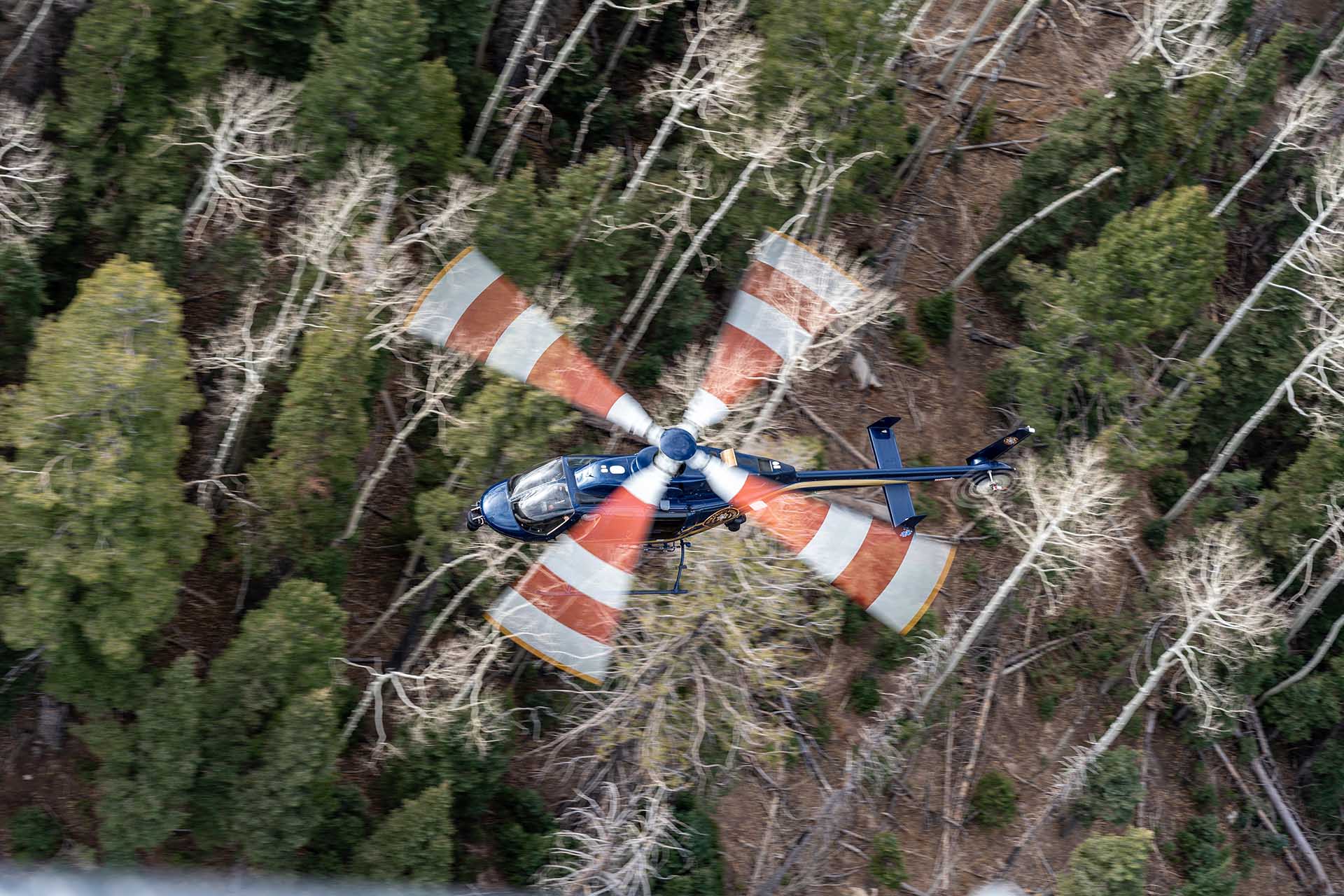
Serious Skills
While many of the pilots at SUU can help with search and locate missions; for complicated missions such as search and rescue or pursuits, only their most experienced, high-hour pilots are utilized. The skill and experience levels of these deputized senior instructor pilots are the keystones to the foundation of the ISCO Air Operations program. Each of the ICSO pilots maintains a strong knowledge of the local terrain, and of their aircraft, and additionally, due to the nature of their environment, all of the ICSO pilots are NVG and mountain flight-qualified at a minimum. Though, most of the program’s pilots have well over 2,000 flight hours at altitudes above 5,000 ft ASL.
Each ICSO pilot has also received advanced levels of off-airport landing, mountain, and IIMC training and has numerous hours of experience in flying tactical profiles in these extreme environments. Interestingly, they are also some of the most proficient pilots in the industry. Because they are also teaching student pilots, they are constantly practicing emergency procedures. Where many pilots do five or ten autorotations in a year, the SUU/ICSO pilots will often do that many in a day.
Training in mission-specific activities is also paramount, in order to successfully blend the pilot and TFO into a cohesive, highly functioning public safety aircrew. Unlike their TFOs, who are deputies that have been chosen through a testing and selection process set forth by the Sheriff’s Office, the pilots do not complete law enforcement training prior to being deputized. In this manner, similar to EMS flying, the pilots are only that… pilots. The priority of the pilots is the safe movement of the aircraft and passengers - and some of those passengers are furrier than others.
Fur Missiles - In Training
K-9 training with the air support unit is conducted semi-annually, or more frequently as needed. The Iron County Sheriff’s Office conducts in-house law enforcement K-9 training and certifications for itself and other area law enforcement agencies. As part of their initial training, the K-9s are exposed to the aircraft which includes the K-9 being loaded, transported, and deployed from the aircraft. One recent training event occurred right after the graduation ceremony of the newest K-9 class. After the officers and their K-9s finished their graduation, the entire class and several of the officers’ family members arrived at the airport, for the helicopter training evolution.
One at a time, the K-9s and their officers would approach, load, and unload from the 407 as it sat static on the ramp. After the static familiarization, the graduates then waited in an area near the airport’s helipads, whilst their family members looked on from a safe vantage point. The ICSO 407 then fired up, and after flying a couple of circuits around the helipad, landed near the waiting officers to begin the second half of the training evolution. For this segment of training, a dog and handler were directed over to the 407 to hot-load and secure themselves in the aircraft’s open, sliding rear door. The helicopter would then take off and fly a couple of orbits around a field adjacent to the helipad. During this time, one of the dog trainers on the ground would enter into the target area of the field while wearing a bite suit. As the aircraft orbited the target zone, the K-9 Officer in the helicopter would point out the open door at the trainer on the ground, keying the dog in on the suited “suspect.” After an orbit or two of getting the dog fixed on its target, the helicopter would then land, and the officer would release his dog - launch the ‘fur-missile.’
One by one, the training cycle progressed in this fashion. A couple of the dogs leapt out of the helicopter the moment the command was given and raced toward their target, making their celebratory bites on the suited trainer. However, being the first time in and around a helicopter, a few of the new K-9s were a little more cautious and calculated about exiting the aircraft than the others. Once the less enthusiastic fliers realized that they were securely on the ground, they exuberantly took off after their suited quarry to make their bites. This cycle repeated until all the dogs and their handlers had a basic level of familiarity and confidence in moving in and out of the hot aircraft, as well as deploying after landing to take down a suspect. Until further certifications are achieved, only this ground-based training is practiced by the air support program. The training benefits however, of a partnership between a law enforcement agency and an institution of higher learning are markedly apparent.

Planning for the Future
In every training evolution they conduct, the ISCO Air Operations program strives to maximize learning, retention, air time, and officer safety. The Sheriff’s Office and SUU are also working on creating a formal training program to standardize and more efficiently assist in the training of new members of the air support program as well as members of cooperative groups, such as the Iron County Sheriff’s Search and Rescue Team. Additionally, the ICSO and SUU Aviation are also developing advanced courses in law enforcement flight including topics such as specialized recovery techniques and tactical flight. These courses are being developed in conjunction with ICSO and DOD with the intention of SUU Aviation becoming an even greater instructional resource, not only for local area agencies but for the public safety aviation community as a whole.
Moving forward, the program’s efforts to boost public awareness and involvement continue and the partnership is receiving great support from the community at large for the critical resources it provides to the citizens and visitors of Iron County. “Most of the public is very supportive of what we have done, and we hope to continue public involvement and education about what we are doing,” states Lieutenant Del Schlosser of the Iron County Sheriff’s Office. There is also a wealth of support for the program from within the ICSO and SUU. In planning for the future, to help maintain and further evolve the air support program, Michael Mower, Executive Director/Chief Pilot SUU Aviation, adds that, “both the Iron County Sheriff’s Office and Southern Utah University are working together on multiple grants for aircraft and more advanced equipment.” Being the only dedicated regional aviation asset for public safety is not an easy, nor low-cost task, if awarded these grants, they will go a long way to help ensure that the ICSO Air Operations program’s aircraft and mission equipment continue to be ready and available to everyone in Southern Utah, for years to come.
 HOME
HOME


